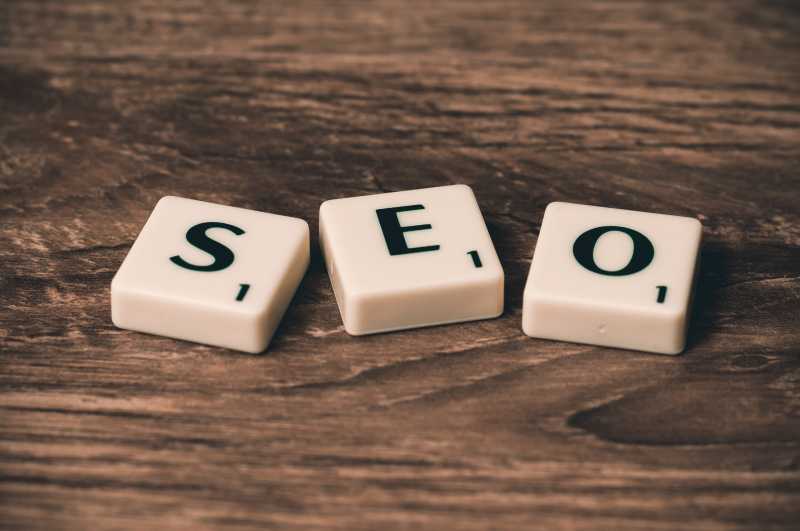In the digital era, having a strong online presence is crucial for businesses of all sizes. But how can you ensure your website stands out in the crowded online marketplace? The answer lies in the benefits of SEO in web design. At CYTICX, a leading web design company in Fort Lauderdale, we understand the importance of incorporating SEO strategies into web design to enhance visibility, drive traffic, and boost conversions. But what exactly are these benefits, and how can they transform your business?
Search Engine Optimization (SEO) in web design is not just about incorporating relevant keywords. It’s about creating a user-friendly, fast-loading, and mobile-optimized website that offers valuable content to your audience. When done right, SEO can significantly improve your website’s visibility on search engines, attract more organic traffic, and ultimately lead to higher conversion rates. At CYTICX, we specialize in creating SEO-friendly websites that not only look great but also deliver exceptional performance.
But the benefits of SEO in web design don’t stop there. Imagine having a website that not only looks good but also ranks high on search engine results pages (SERPs). A website that not only attracts visitors but also converts them into customers. Sounds exciting, right? Stay tuned as we delve deeper into the world of SEO and web design, exploring how the two can work together to give your business a competitive edge in the digital landscape. Let’s dive in and discover the power of SEO in web design!
Understanding SEO and Web Design
SEO, or Search Engine Optimization, is the art of enhancing a website’s visibility on search engines. On the other hand, Web Design is the process of creating an aesthetically pleasing and user-friendly website. When these two elements intertwine, a powerful digital tool is born. SEO and Web Design are not separate entities; they work in harmony to create a website that is not only visually appealing but also ranks high on search engine results.
In the digital world, the importance of both SEO and Web Design cannot be overstated. A well-designed website attracts visitors, while effective SEO ensures that the website is easily discoverable. Together, they increase website traffic and improve user experience, ultimately leading to higher conversion rates.
The role of SEO in web design is pivotal. It ensures that the website is designed in a way that search engines can easily crawl and understand its content. This includes using relevant keywords, optimizing images, and ensuring mobile-friendliness.
For more information on how we intertwine SEO and Web Design, visit our About Us page. To learn more about our marketing strategies, check out our Marketing page. If you have any queries, feel free to Contact Us.
The Impact of SEO on Web Design
SEO plays a pivotal role in shaping the design of a website. It’s not just about keywords and backlinks; it’s about creating a user-friendly platform that search engines can easily navigate. For instance, a well-structured website with clear navigation aids both users and search engines. It ensures that users can find what they’re looking for quickly, while search engines can crawl and index content efficiently.
A prime example of this is our About page. The layout is intuitive, the navigation is straightforward, and the content is optimized for relevant keywords. This not only enhances the user experience but also boosts our visibility on search engines.
Moreover, SEO can significantly influence the overall user experience. A website that loads quickly, is mobile-friendly, and has high-quality, relevant content will rank higher in search engine results. Our Blog page is a testament to this. It’s designed with SEO in mind, ensuring that our content reaches the right audience and provides value.
In conclusion, integrating SEO into web design is crucial for online success. It shapes the design, affects the layout and navigation, and enhances the user experience. For more information on how we can help you achieve this, visit our Contact page.
SEO-Friendly Design Elements
In the realm of web design, certain elements can be optimized for SEO to enhance a website’s visibility on search engines. One such element is responsive design. This design approach ensures that your website looks and functions optimally on all devices, from desktops to smartphones. Search engines like Google prioritize mobile-friendly sites, making responsive design a crucial SEO factor.
Another key element is easy navigation. A well-structured, intuitive layout allows users to find information quickly and effortlessly, reducing bounce rates and increasing the time spent on your site. Both of these metrics are considered by search engines when ranking websites.
Lastly, fast loading speed is an essential design element for SEO. Slow-loading pages can frustrate users, leading to higher bounce rates and negatively impacting your SEO. By optimizing images, minimizing code, and leveraging browser caching, you can significantly improve your site’s loading speed.
Incorporating these SEO-friendly design elements into your web design strategy can significantly enhance your site’s visibility on search engines, driving more organic traffic to your site and ultimately boosting your business’s online presence. For more information on how to optimize your website for SEO, feel free to contact us.
The Role of Keywords in Web Design
Keywords play a pivotal role in SEO, acting as the bridge between user queries and your website. When incorporated effectively into web design, they enhance your site’s visibility on search engines. For instance, strategic placement of keywords in meta tags, headers, and content can significantly improve your site’s SEO.
Understanding the concept of keyword density is also crucial. It refers to the frequency of your keyword appearing on a webpage compared to the total word count. A higher keyword density can improve your site’s ranking on search engines. However, overuse can lead to penalties, as search engines may view it as keyword stuffing.
To use keywords effectively in web design, consider these tips. First, identify relevant keywords using tools like Cyticx’s marketing services. Next, incorporate these keywords naturally into your content, ensuring they don’t disrupt the user experience. Also, use them in your meta tags and headers for better SEO.
Lastly, remember to monitor your keyword performance regularly. This can be done through Cyticx’s blog, which provides insights on SEO trends and practices. By understanding the importance of keywords and using them effectively, you can enhance your web design and boost your site’s SEO.
The Importance of Mobile-Friendly Design in SEO
The surge in mobile internet usage has significantly influenced SEO strategies. Today, a staggering number of users access the internet via their smartphones, making mobile-friendly design a crucial aspect of SEO. Websites optimized for mobile devices rank higher on search engine results pages, enhancing visibility and driving more organic traffic.
A mobile-friendly design not only improves user experience but also boosts a website’s SEO. Search engines like Google prioritize mobile-friendly websites, leading to improved rankings. Moreover, a mobile-optimized site reduces bounce rates and increases dwell time, signaling positive user engagement to search engines.
To make your website mobile-friendly, start by implementing a responsive design that adapts to different screen sizes. Optimize your site’s load time by compressing images and minimizing the use of heavy scripts. Also, ensure that your site’s content is easily readable on mobile devices.
For more insights on mobile-friendly design, visit our blog. To learn more about our SEO strategies, check out our marketing page. If you need assistance in optimizing your website for mobile devices, don’t hesitate to contact us.
The Impact of SEO on User Experience
SEO, when integrated into web design, significantly enhances the user experience. A well-optimized site, such as Cyticx, ensures swift navigation, easy access to information, and a seamless browsing experience. These factors contribute to a positive user experience, which in turn, boosts the site’s SEO ranking.
A website’s SEO ranking is directly influenced by its user experience. Google’s algorithm favors sites that offer a user-friendly interface, quick loading times, and high-quality content. For instance, a site with a well-structured layout and engaging content, like Cyticx’s blog, is more likely to rank higher in search results.
The synergy between SEO and user experience is evident in various scenarios. For example, a site with relevant, keyword-rich content attracts more visitors, improving its SEO ranking. Simultaneously, this content, if well-structured and easy to read, enhances the user experience. Similarly, a mobile-optimized site not only ranks higher in search results but also provides a better browsing experience. Thus, SEO and user experience work hand in hand, each enhancing the other, as seen on the Cyticx marketing page.
SEO and Web Design: A Long-Term Investment
Integrating SEO into web design is a strategic move that yields long-term benefits. A well-optimized website, designed with SEO in mind, not only attracts organic traffic but also enhances user experience, contributing to the site’s longevity and success.
A key aspect of this integration is the creation of a responsive design. A website that adapts to different devices ensures a seamless user experience, which is a significant factor in SEO ranking. This, coupled with the use of relevant keywords and high-quality content, can significantly boost your site’s visibility on search engines.
Maintaining SEO in web design requires consistent effort. Regularly updating your site with fresh, relevant content is crucial. Additionally, monitoring your site’s performance using tools like Google Analytics can provide valuable insights into areas that need improvement.
Remember, SEO and web design are not one-time tasks but ongoing processes that require regular updates and tweaks. For more insights on this topic, visit our blog. To learn more about our services, check out our marketing page or contact us directly.
Frequently Asked Questions about SEO in Web Design
- "How does SEO affect web design?" SEO plays a crucial role in web design as it ensures your website is easily discoverable by search engines. This involves optimizing various elements like site structure, page load speed, and mobile-friendliness. Learn more about this on our About page.
- "What are some SEO-friendly design elements?" SEO-friendly design elements include a clean and easy-to-navigate layout, fast loading times, mobile optimization, and the strategic use of keywords in your content and meta tags. Dive deeper into these elements on our Blog page.
- "How can I incorporate keywords into my web design?" Keywords can be incorporated into your web design through your content, image alt tags, meta descriptions, and URLs. However, it’s important to use them naturally and avoid keyword stuffing. For more information, visit our Marketing page.
Remember, SEO and web design go hand in hand. A well-designed website that’s also SEO-friendly can significantly improve your online visibility and user experience. If you have more queries, feel free to reach out to us on our Contact page.
Conclusion: The Future of SEO and Web Design
In conclusion, the integration of SEO into web design is not just a trend, but a necessity for businesses aiming to thrive in the digital landscape. The article has highlighted the significant benefits of SEO in web design, from improved visibility to enhanced user experience. As we look ahead, the fusion of SEO and web design will continue to evolve, with trends like mobile-first design, voice search optimization, and AI-driven SEO strategies becoming more prevalent.
The future of web design and SEO is promising, with the potential to transform how businesses reach and engage with their audiences online. Therefore, it’s crucial for businesses to start embracing SEO in their web design process. By doing so, they can ensure their websites not only look good but also perform well in search engine rankings.
For more insights on SEO and web design, check out our blog. If you’re ready to start integrating SEO into your web design, feel free to contact us. Our team at Cyticx is here to help you navigate the future of SEO and web design.





